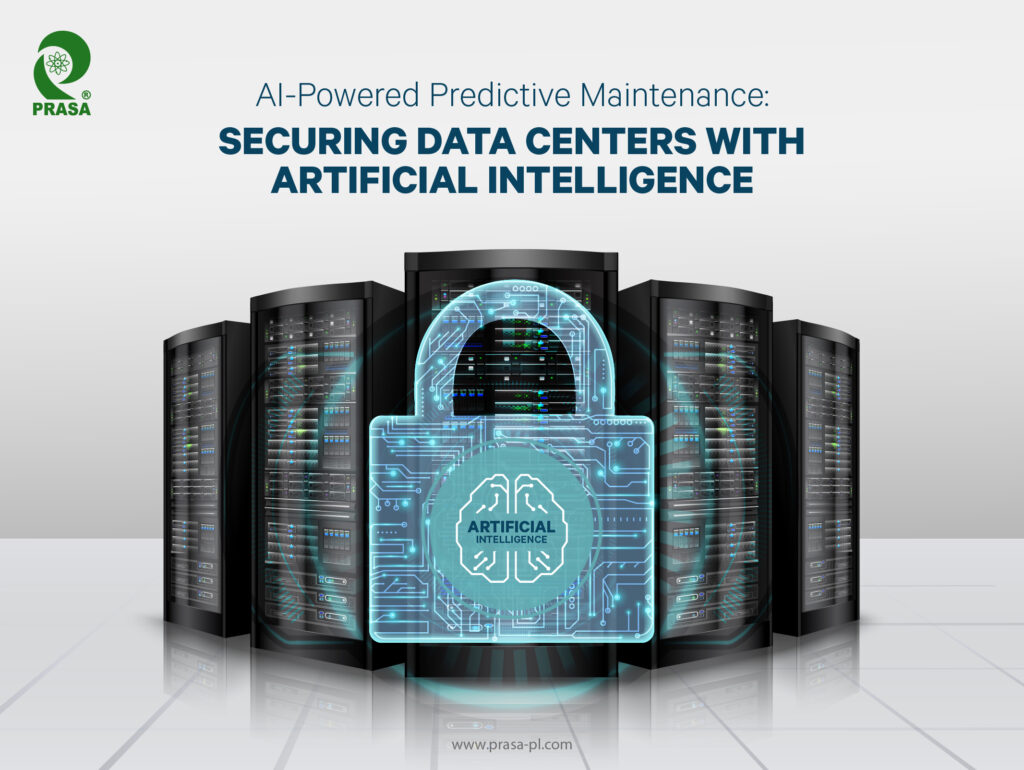
In the ever-evolving world of data centers, where reliability and uptime are paramount, the integration of artificial intelligence (AI) is revolutionizing the way we approach maintenance and security. End-to-end data center solutions are now at the forefront, where traditional methods of reactive maintenance are giving way to proactive strategies that leverage AI for predictive maintenance. This shift is not only increasing operational efficiency but also ensuring that data centers remain resilient against hardware failures and system downtime. In this blog, we’ll explore how AI is harnessed to predict and prevent these critical issues by analyzing data from sensors and monitoring systems.
The Challenge of Data Center Downtime
Data centers are the lifeblood of the digital age, powering everything from cloud services to e-commerce platforms. Their flawless operation is non-negotiable. Any downtime can lead to financial losses, damaged reputations, and frustrated users. One of the major challenges data center operators face is keeping their systems running at peak performance while minimizing disruptions. Traditional maintenance methods, often based on fixed schedules or reacting to issues as they arise, can be costly, inefficient, and not always effective in preventing outages.
Enter AI-Powered Predictive Maintenance
Predictive maintenance powered by AI is a game-changer in the data center industry. It leverages machine learning algorithms to analyze vast amounts of data from sensors, monitoring systems, and historical performance records. This data is then used to predict when equipment is likely to fail so that maintenance can be performed proactively, reducing the risk of unplanned downtime.
Here’s how AI makes it happen:
1. Data Collection:
AI starts by collecting data from various sources within the data center. This includes temperature and humidity sensors, power usage monitors, server performance metrics, and more. The more data points, the more accurate the predictions can be.
2. Data Analysis:
Once the data is collected, AI algorithms get to work. They analyze patterns and anomalies in the data to identify early signs of equipment wear and tear. For example, a sudden spike in temperature or a gradual decrease in server performance might be indicative of an impending issue.
3. Predictive Analytics:
The AI system uses historical data and machine learning models to predict when a piece of equipment is likely to fail. These predictions come with a confidence level, helping operators prioritize maintenance tasks based on urgency.
4. Proactive Maintenance:
With predictive maintenance insights in hand, data center operators can schedule maintenance during planned downtime or low-traffic periods. This minimizes disruptions and allows for the replacement or repair of components before they fail.
Benefits of AI-Powered Predictive Maintenance
The advantages of AI-powered predictive maintenance in data centers are substantial:
1. Reduced Downtime:
By catching potential issues before they cause failures, data centers can significantly reduce unplanned downtime. This is critical for maintaining high availability and meeting service-level agreements.
2. Cost Savings:
Proactive maintenance is often less expensive than reacting to emergencies. It eliminates the need for costly emergency repairs and minimizes the impact of downtime on revenue.
3. Extended Equipment Lifespan:
Regular, well-timed maintenance extends the lifespan of data center equipment. This means fewer replacements and less capital expenditure.
4. Improved Efficiency:
Predictive maintenance optimizes the use of resources. Repairs and replacements can be planned for times when they have the least impact on operations.
Challenges and Considerations
While AI-powered predictive maintenance offers significant benefits, there are challenges to consider:
1. Data Quality:
The accuracy of predictions heavily relies on the quality and quantity of data collected. Data center operators must ensure that their sensors and monitoring systems are reliable.
2. Implementation Costs:
Setting up an AI-driven predictive maintenance system can be costly, particularly for smaller data centers. However, the long-term savings often outweigh the initial investment.
3. Skill Requirements:
Operating AI systems and interpreting predictive analytics may require specialized knowledge and skills that data center staff might need to acquire.
Conclusion
AI-powered predictive maintenance is a game-changing technology for data centers, enhancing reliability and efficiency while reducing costs and downtime. By harnessing the power of AI to analyze data from sensors and monitoring systems, data center operators can proactively address equipment issues before they lead to catastrophic failures. As data centers continue to play a crucial role in our digital world, embracing AI is not just an option; it’s a necessity for staying competitive and resilient in an increasingly data-driven environment.
Ready to transform your data center’s maintenance strategy and ensure uninterrupted operations? PRASA Infocom & Power Solutions Pvt. Ltd. is here to help. Explore the potential of AI-driven predictive maintenance tailored to your data center’s specific requirements. Contact us today at +91-8806660084 or email us at enquiry@prasa-pl.com to schedule a consultation and discover how AI can optimize your data center’s performance while minimizing downtime.


Awesome post! Thanks for sharing the knowledge and keep up the good work.